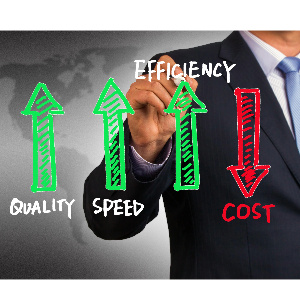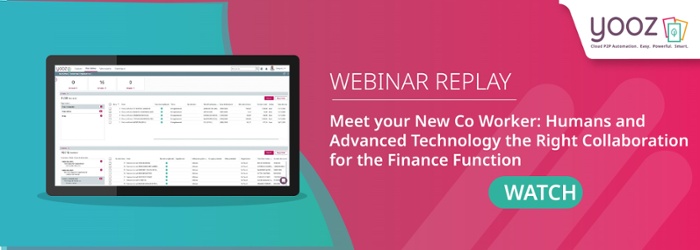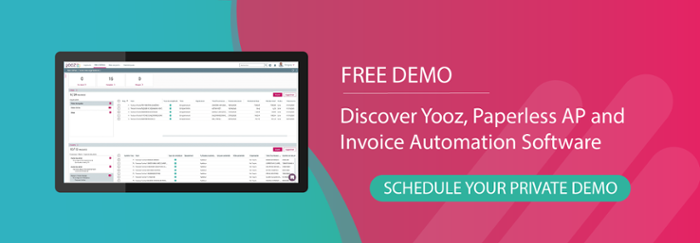Running a full-service restaurant business is a demanding task. From menu planning and staff training to maintaining a consistent supply chain, every aspect is related and requires careful attention. However, with everything constantly in motion, one area that often becomes challenging is accounting. This is where accounting and technology come together, with specific restaurant invoice management accounting software can make a significant difference.

Why Use Accounting Software?
The overall financial picture for restaurants isn't pretty, even before considering ongoing economic challenges. Failure rates can be high, ranging from an often repeated but unsubstantiated claim of 90% of establishments going out of business within the first year to just 25% not surviving. Other studies, such as H.G. Parsa's from Ohio State University, suggest that about 60% of restaurants - stand-alone or franchise - fail within the first three years.
Furthermore, restaurant profit margins are typically thin, with industry experts like Restaurant Resource Group claiming that the average profit margins for restaurants typically range between 2% and 6%, with full-service restaurants at the lower end of the spectrum and limited- or quick-service restaurants at the higher end.
Effective financial management is crucial to avoid becoming part of these statistics.
An accounting software system tailored specifically for restaurant industry needs can be the difference between thriving and barely surviving. The right software handles everything from bookkeeping and food supply ordering to staff scheduling and integrating with point-of-service payment systems, ensuring efficient management of a high number of daily cash and credit card payments.
Keeping Track of the Details
When it comes to running a food business, it's certainly true that you can only manage what you can measure. The more fine-grained the data around inputs and outputs - and the more frequent these key metrics can be gathered - the greater the chances that revenues aren't consumed by expenses. Some of the specific areas where a good restaurant accounting software system makes a difference includes:
Real-Time Data Accuracy
In a hectic restaurant environment, maintaining accurate financial records can be challenging. The best accounting software for restaurants automates the repetitive entering of financial data, reducing errors and ensuring accurate financial information. This automation not only saves time but also provides a reliable digital trail for audits and tax purposes.
- Significantly reduces the possibility of missing or redundant data
- Stores all information in a single database
- Accurate, real-time data improves decision-making capability
Enhancing Planning and Forecasting
Strategic financial planning and forecasting are vital for a restaurant's log-term success. Restaurant specific automated accounting software provides tools for creating budgets, forecasting future sales, and planning for expenses. With access to historical data and real-time analytics, restaurant owners can make informed decisions for everything from menu pricing to inventory management. Forecasting tools help predict busy periods and slow seasons, allowing for better resource allocation and staffing decisions. This proactive approach can significantly improve profitability and operational efficiency.
.jpeg?width=200&height=300&name=best-accounting-software-for-restaurants-chef%20(2).jpeg) What about real-time information?
What about real-time information?
Having real-time, accurate data available at your fingertips enables on-demand financial reporting for everything from daily planning and decisions to auditing and tax reporting. With just a few clicks you can quickly compare information such as inventory, pricing, and payroll. You can track expenses and cost of goods sold - important in a volatile economic environment - and use these insights to better manage cash flow, negotiate better inventory rates, or set pricing effectively. Having this level of detail can make a significant difference in profitability.
Greater Efficiency
Automated accounting software streamlines daily activities, saving on administrative time and effort. It eliminates manual data entry and cross-checking, integrates with POS systems, improves inventory tracking, and enhances reporting capability.
This efficiency reduces paper usage on both the front and back-end. It saves time and minimizes the risk of losing critical information.
Improved Communication
Having real-time information in a centralized location and accessible 24/7 by mobile device improves communication across all areas of the restaurant. This enhanced level of communication can significantly improve staff relations and supplier management, ensuring smooth operations.
Navigating Tax Compliance and Payroll Management
Tax compliance is another critical area where restaurant accounting software stands out. Restaurants face a number of tax regulations, including sales tax, payroll tax, and income tax. Navigating these regulations can be complex and time-consuming, especially with the high volume of daily transactions typical of the restaurant industry.
Accounting software helps automate tax calculations and ensures accurate, timely tax filings, reducing the risk of costly penalties and audits.
Regulatory Compliance and Fraud Protection
In addition to tax compliance, ensuring overall regulatory compliance is essential. Restaurants must adhere to several strict health, safety, and employment regulations. Accounting software can track compliance requirements and alert management to upcoming deadlines, avoiding potential fines and streamlining operations.
Fraud prevention is another significant benefit offered by the software. Automated systems reduce the risk of theft and fraud by maintaining detailed records of financial transactions. These records can be audited regularly and quickly to ensure accuracy and transparency. Features like user permissions, audit trails, and centralized storage help control who has access to financial data and track any changes made.
Cutting Through Barriers: Additional Benefits
Besides providing real-time analytics and planning support, state-of-the-art accounting software for restaurants offers several additional benefits including:
- Reduced Cycle Times and Processing Costs: Automated invoice processing software ensures timely payments, unlocking early-pay discounts and strengthening supplier relationships. A vendor who knows that the restaurant will pay their bills on time, every time is more likely to bump them to the front of the line when there’s a delivery crunch.
- Real-Time Financial Insights: Easily accessible financial insights enable automated routing operations like reordering and electronic payments, streamlining workflows.
 6 Questions to Ask Before Choosing Restaurant Accounting Software
6 Questions to Ask Before Choosing Restaurant Accounting Software
Selecting the best accounting software for your restaurant involves understanding your financial goals. Here are some key questions that you should ask when reviewing restaurant software options:
- Will it meet my restaurant's needs? This is the first question that you should ask. The software should be able to accommodate your restaurant's workflow and be customizable for any requirements.
- Is my information secure? Cloud-based accounting software systems offer centralized, secure capture and storage?
- Is it a complete system? Restaurant accounting software should be end-to-end, automating repetitive steps and streamlining tasks all within house, no outsourcing.
- Does it integrate with other software systems? Automated restaurant accounting software should integrate with existing financial or scheduled software.
- Is it user-friendly? There should be an intuitive interface for easy staff training and usage.
- How fast until I can use it? Implementation time of the software system is important; you want to be using your investment as quickly as possible.
Understanding your restaurant's specific needs and workflows will help in selecting software that is the best fit.

Bank on a Recipe for Success
At the end of the day, running a restaurant of any size - from a small franchise operation with multiple locations or a single establishment - should be about creativity and customer satisfaction, not paperwork. Shuffling purchase orders, invoices and other paperwork shouldn’t take center stage and become a distraction from the actual core business.
Restaurant invoice processing software ensures smooth operations, accurate data, and real-time reporting, saving time and money. These digital tools are affordable and essential for success, even for small businesses.
Don't wait, embrace innovative accounting technology and let it be the ultimate kitchen aid, allowing you to focus on creating memorable dining experiences and building customer loyalty.
Why Choose Yooz
Yooz provides restaurants with the best accounting software for their business, the key to their success. It delivers unmatched savings, speed, and security using a unique combination of Artificial Intelligence (AI) and RPA to deliver an amazing level of automation with extreme simplicity, traceability, and end-to-end customizable features.
No matter the restaurant size, we have your solution! Reach out today to see what Yooz can do for you.
FAQs
Is automated accounting software affordable for my small business?
Is there a greater benefit to use cloud-based accounting software for my restaurant?
How does automated accounting software improve efficiency in a restaurant?








